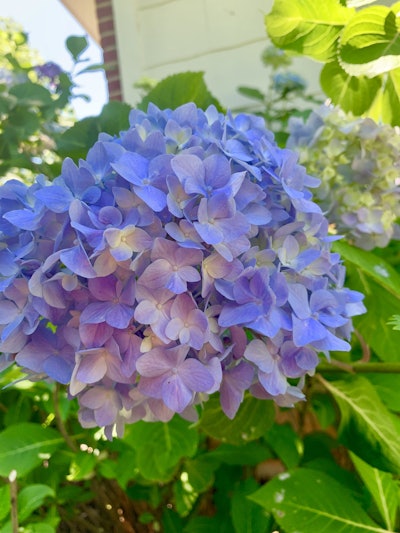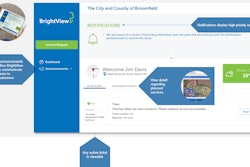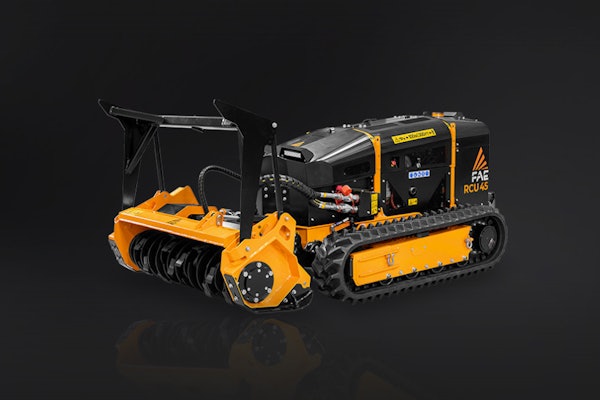 Photo: Beth Hyatt Presley/Total Landscape Care
Photo: Beth Hyatt Presley/Total Landscape CareHydrangeas come in many shapes, varieties and colors, but if you find your customers noticing their hydrangeas not blooming to their full extent, never fear. There are a few simple steps you can take to check on the health of the plant and ensure it gets back on track.
Healthy enough and properly sitting
Lorraine Ballato, author of Success With Hydrangeas: A Gardener’s Guide, says that it takes a fair amount of energy for a plant to create flowers, so it’s important to make sure your customer’s hydrangeas are well fertilized. Ideally, hydrangeas should continue to be fertilized frequently until the first of August.
When using fertilizers, the best time to apply to hydrangeas is in spring or early summer. Slow-release, granular fertilizers with a high percentage of phosphorus are recommended, as phosphorous is the element that encourages bloom production. While over-fertilizing can cause the hydrangea leaves to become large and green, it can stunt bloom production.
When customers see plants wilting, the natural tendency is to immediately water the plants more, but this isn’t always necessary. Hydrangeas do prefer soil that is moist and well-drained, but not wet.
“Most times, additional watering won’t be necessary as hydrangeas rehydrate as soon as the sun is off them,” Ballato told the National Garden Bureau. “They reach back into the surrounding soil and perk back up within a few hours.”
Encourage customers to hold back on watering again until the sun has moved off the hydrangeas to see if this was the cause of the wilting, and if they see the plant is still drooping, tell them to proceed with watering.
Ballato says to remind customers that excess water in the roots can take away necessary oxygen from the plant and rot it, which will lead to it dying.
“But more importantly, too much water will cause your plant to make leaves and not flowers or even kill it,” Ballato told the National Garden Bureau.
Clay soils, as opposed to sand and loam, will hold more water and produce more runoff. It is recommended to use soaker hoses, hand watering or drip irrigation when watering these plants.
Drip irrigation helps save water and fertilizer by letting water slowly drip to the roots of plants through a network of valves, emitters, tubing and pipes. Using this form of irrigation helps keep water from evaporating or spilling, and the water goes directly to the root system of the plants, where it is most needed.
Using mulch with plants can also help conserve water and keep the ground cool. Mulched plants are usually able to go longer periods of time between watering than plants without mulch.
Another aspect Ballato says to check into is whether or not the hydrangeas are properly sitting. Where hydrangeas are planted, especially in the north, is important for their blooming.
The farther north you find yourself, the more sun hydrangeas can handle, and in the south the sun tolerance will not be as high due to the intensity of the sun. For bigleaf hydrangeas, Ballato says it’s ideal that they receive half a day of sun and this is especially beneficial in the morning.
If your customer’s hydrangeas aren’t located in an area like this, tell them not to fret, as they will still be able to see flowers in time. If this is the case with the location of their plant, be sure to keep an eye on the moisture level in the soil to ensure there is enough water present for them to rehydrate as needed.
The more important aspect of where hydrangeas sit deals with how this location will be affected when winter sets in. When possible, Ballato says to consider planting them near winter persistent barriers like evergreens or plants that will hold their browned-out leaves.
If your customer is lacking in natural barriers such as those previously mentioned, take a look around and see if there are areas near fences, neighboring houses, garden sheds or lawn furniture that could be turned sideways to block cold winds and icy rain in the winter.
Nitrogen levels and pruning
If your customer’s hydrangea is downhill of a neighboring lawn, Ballato says there could be an excess of nitrogen present in the soil, which will lead to the production of leaves instead of flowers.
Take a walk through your customer’s garden and take note of the space availability to see if moving the hydrangea is a possibility to keep that excess fertilizer from reaching the plant.
Another common reason your customer’s hydrangea might not be flowering is because it might have been pruned at the wrong time, according to Ballato.
“Your bigleaf hydrangeas start to develop their flower buds for next year from about August 1 onward,” Ballato told the National Garden Bureau. “Those buds take several weeks to form and then stay on the stems until the following season. Anytime you prune that plant between August 1 and when you see the buds – not just the leaves – you run the risk of cutting off ‘sleeping’ flowers.”
One reason Ballato says your customer may be confused is because he/she is unsure of whether his/her hydrangea is blooming on old wood or new wood, as this will determine the appropriate time to prune.
When flowers bloom on a previous year’s buds, the wood is considered old, and when flowers appear on the current year’s growth, the wood is considered new. To avoid removing developing buds, old wood hydrangeas should be pruned shortly after the current flowering.
Take time to research and find out more about the pruning needs of specific hydrangeas that you can share with your customers the next time you visit their yard.











